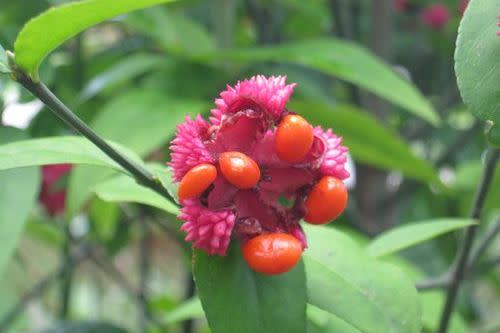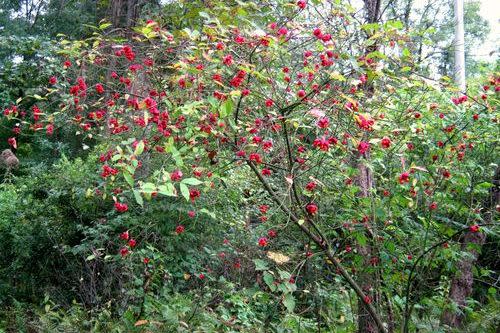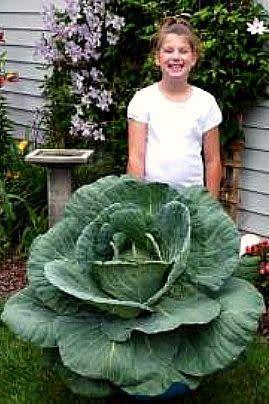Fall in Love with This Native Shrub
I get a bit quarrelsome with native plant fanatics who insist no plant is any good unless it's native. Plant the right plant in the right spot, I say. Yet there is a native plant my my yard that hardly anybody grows and most people ought to. Some folks know it as strawberry bush. Others call it hearts-a-bustin.'

Native to the eastern and southern U.S., strawberry bush (Euonymus americanus) in the wild is typically found in the forest understory. This slowly suckering shrub grows about 6 feet tall and wide. It's pretty nondescript in spring and summer, but fall and winter is another story. In early fall, showy, scarlet fruits appear in abundance. They open to reveal purple insides and bright orange seeds (that where 'hearts-a-bustin'" comes from). Later in fall, the rich green leaves turn soft yellow suffused with pink. I can't think of many plants that turn that color.

In winter, strawberry bush is easy to spot in the woods. In the midst of barren trees, just look for the cluster of bright, green stems.
Don't Fear This Euonymus
Unlike most other species of euonymus (or "anonymous," as people would ask for it when I worked in a nursery), this one isn't a pain in the butt. It doesn't spread all over, push out other species, or get covered up with scale. All it wants is good, well drained soil with lots of organic matter. Although in nature you find it in shady woods, in my yard it also tolerates full sun and drought. Birds eat the seeds, so you might find another one popping up here or there. I now have one in my front garden and one in the back.
Strawberry bush grows fine all the way from central Florida to the Great Lakes (or USDA Zones 5-9). Your garden center probably won't have it (unless it's an enlightened one), but you can order it by mail from Woodlanders. Don't worry if you start with a small plant. It grows quickly.
The Great Cabbage Strikes Again

In 2002, Bonnie Plants initiated the 3rd Grade Cabbage Program with a mission to inspire a love of vegetable gardening in young people. Each year, Bonnie trucks more than one million free cabbage plants to 3rd Grade classrooms across the country. Teaches distribute plants with instructions, provided by Bonnie, to students to carry home and grow. At the end of the growing season, teachers select a class winner, based on size, appearance and maturity and that submission is entered in a state scholarship drawing. The state winners are randomly selected by each state’s Director of Agriculture, and Bonnie Plants awards a $1,000 scholarship to one student in each state.
The cabbages used for the 3rd grade program are OS Cross (Over-sized), which is known for producing giant, oversized heads even bigger than that of Conan O'Brien, making the process even more exciting for kids. Some kids have grown cabbages weighing more than 50 pounds!
If you're a 3rd Grade teacher or a parent of a 3rd grader and want to grow a giant cabbage and win big bucks, click on Bonnie Plants right now for instructions on how to enter.
